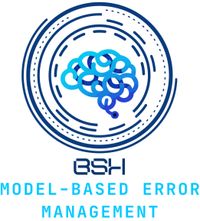Break-in at the Louvre: How Model-Based Error Management Can Increase Security in Museums and Could Have Prevented the Intrusion
The success of the thieves was not based on high technology, but on exploiting human and technical weaknesses that represented a failure of the entire security system.
The break-in succeeded not because of a single error, but due to a cascading chain of failures: a physical weakness (a window) triggered an alarm that, because of technical and procedural deficiencies, was not processed effectively—something that human error then escalated into a complete system failure.
The model-based error management offered by BSH Consulting is a proactive approach that breaks exactly this chain of errors. Instead of reacting to incidents after they occur, potential errors and vulnerabilities are simulated and addressed in advance.
Here is how it works in detail:
1. Creation of a digital twin:
A detailed digital model (a “digital twin”) of the entire museum is created. This model contains all physical features (floor plans, doors, windows, display cases), all technical systems (alarm systems, cameras, sensors, access controls) and all security processes (patrols, alarm procedures, emergency protocols).
2. Simulation of attack scenarios (“stress tests”):
In this simulated environment, hundreds of break-in scenarios are systematically tested. What happens if intruders enter through the roof? How does the system react if a sensor on window X fails? What if the guard is too slow? The exact scenario—the specific path taken by the perpetrators in 2025—would have been predictable in the simulation.
3. Identification of vulnerabilities before anything happens:
The simulation reveals the critical paths and “single points of failure.” In the case of the Louvre in 2025, the model would most likely have shown:
- That the access point used was an insufficient barrier.
-
That the alarm chain was too slow and prone to misunderstandings.
- That the connection between the triggered alarm and camera tracking was inadequate.
4. Development and testing of countermeasures in the model:
Before expensive physical changes are made, solutions can be tested in the digital twin. Example measures the model would have recommended:
- Technical: Retrofitting the weak access point with improved sensors and automatic locking of internal doors when an alarm is triggered.
- Procedural: A new, streamlined alarm plan with automatic GPS-precise localization of the alarm on the security staff’s tablets and defined, trained deployment routes.
-
Systemic: Integration of AI-supported video analytics that detect suspicious activity in real time and actively alert the security center instead of simply recording passively.
If the Louvre had introduced model-based error management before 2025, the specific vulnerability exploited by the intruders would have been identified in advance. The simulated countermeasures would have prevented the break-in by either making access physically impossible, speeding up the alarm chain, or enabling security personnel to intercept the perpetrators through proactive camera tracking and immediate deployment. It transforms security from a reactive to a forward-looking, scientifically grounded process.
